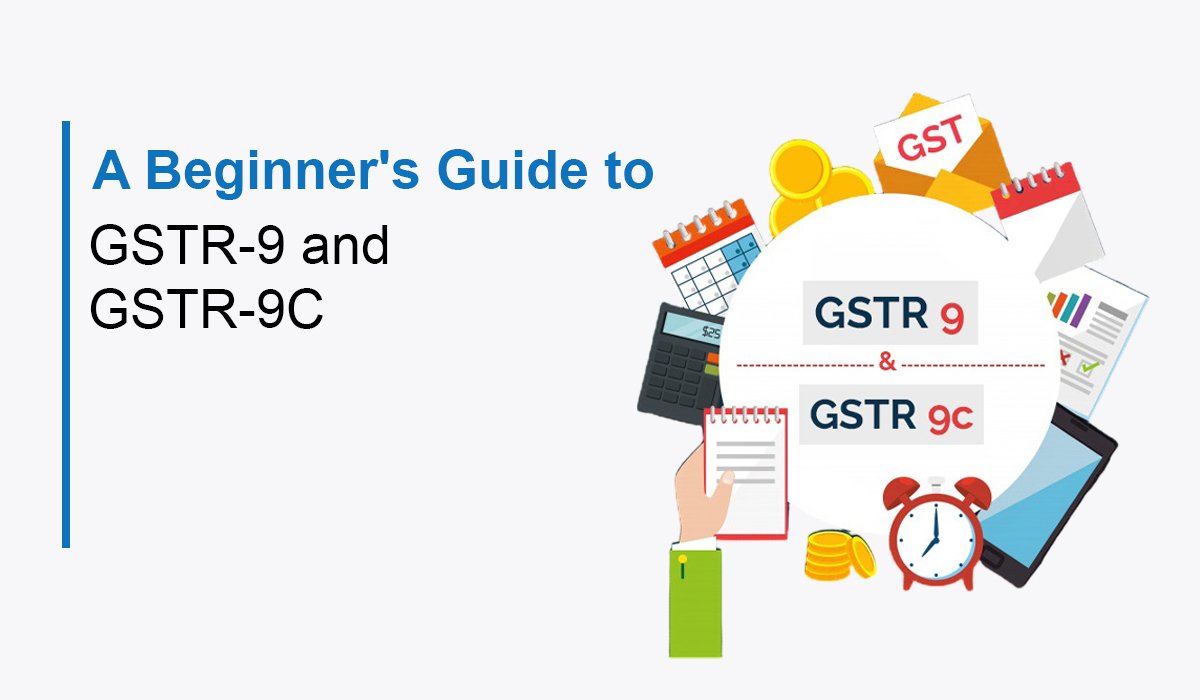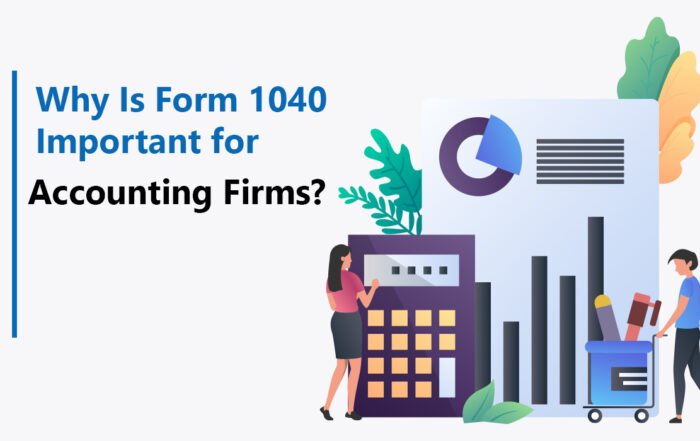The Goods and Services Tax (GST) system in India streamlines how businesses handle tax compliance. GSTR-9 and GSTR-9C are annual returns that all GST-registered taxpayers must file to make the GST filing process more transparent and error-free.
For businesses that have recently adopted GST or have yet to file returns, understanding the complexities of GSTR-9 and GSTR-9C may seem challenging.
This guide helps readers understand what the turnover limit means, why it’s important to file them, how to go about filing, what happens when you fail to file these documents, and the turnover thresholds for each form.
By the end of this article, you should understand both GSTR-9 and GSTR-9C filings and how to avoid the legal consequences your business may face. Let’s dive in!
What is GSTR-9?
GSTR-9 is an annual return that business entities under the GST system must submit. This return shows the net outputs and inputs of the taxpayer, the total tax amount, available ITC, and claims for all payments made for the financial year. GSTR-9 is a yearly reconciliation return that helps verify whether all returns filed in a given year, including GSTR-1, GSTR-3B, and others, were filed properly.
Every registered dealer with a turnover above the prescribed limit under GST must file GSTR-9 once a year. The form has several sections, including general business information, supply of goods and services, ITC, tax paid, and more. You must fill in all these details to provide a complete account of the company’s taxes.
What is GSTR-9C?
GSTR-9C is a reconciliation statement that businesses with a turnover over ₹2 crore must file concurrently with GSTR-9. This audit report compares the financial position of the taxpayer with the data provided in the GST returns. GSTR-9C verifies the tax figures reported in GSTR-9.
While every GST-registered business files GSTR-9, businesses filing GSTR-9C need a certification from a CA or a Cost Accountant. This certification confirms that the company’s books of accounts comply with the GST returns filed throughout the year, ensuring there are no discrepancies if an audit occurs or if tax authorities investigate the business.
Why Are GSTR-9 and GSTR-9C Important?
Both play a crucial role in GST compliance. GSTR-9 provides an overall picture of a business’s GST activity throughout the year, and GSTR-9C is the auditor’s report that certifies whether the information in GSTR-9 is accurate.
These returns serve multiple purposes:
- Ensuring Accuracy: GSTR-9 ensures businesses declare their GST transactions correctly, with tax authorities verifying payments from the returns.
- Audit Compliance: GSTR-9C helps businesses with annual turnovers above ₹2 crores reconcile their accounts and GST returns to ensure balance and order.
- Avoiding Penalties: Filing these returns helps businesses avoid penalties for late submission or incorrect tax information.
When are GSTR-9 and GSTR-9C Required to Be Filed?
You generally must file both by December 31 of the year following the relevant financial year. For example, the GSTR-9 and GSTR-9C for the year 2023-24 must be filed by December 31, 2024.
You must file these returns on time to avoid penalties and interest charges. Late filing can result in heavy fines and audits, and non-compliance may have legal consequences.
Turnover Ceiling for GSTR-9 & GSTR-9C
The turnover limit for GSTR-9 and GSTR-9C distinguishes these two forms. Filing GSTR-9 is mandatory for businesses with a turnover exceeding ₹2 crore. If a business’s turnover is below this limit, it only needs to file GSTR-9 and is exempt from GSTR-9C. However, businesses with a turnover above ₹5 crore must have their books audited by a Chartered Accountant or Cost Accountant, even if GSTR-9C is not required.
How to File GSTR-9 and GSTR-9C?
Filing GSTR-9:
Filing GSTR-9 is simple but comprehensive. Follow these steps:
- Log in to the GST Portal: Go to the official GST portal, and enter your GST number and password.
- Select GSTR-9: From the dashboard, go to the “Returns” section and click on “GSTR-9.”
- Enter Financial Year Details: Choose the financial year for which you are filing.
- Fill in the Details: Provide details of your sales, purchases, registration number, ITC availed, and taxes paid.
- Reconcile with GSTR-1 and GSTR-3B: Ensure all the information matches your monthly or quarterly returns.
- Submit and Pay: Sign the return and pay any outstanding tax amount.
Filing GSTR-9C:
Filing GSTR-9C requires reconciling your accounts. Follow these steps:
- Obtain Financial Statements: Gather your profit and loss account, balance sheet, and trial balance.
- Reconcile with GSTR-9: Compare your financial statements with GSTR-9 to ensure the turnover and taxes match.
- Certification by a CA: After reconciliation, a CA or Cost Accountant must certify the figures and provide the report.
- Submit the Form: After obtaining certification, file GSTR-9C on the GST portal along with the signed report.
Penalties for Late Filing of GSTR-9 and GSTR-9C
Failing to file GSTR-9 and GSTR-9C on time can lead to penalties. The late fee is ₹50 per day for GSTR-9 and ₹200 per day for GSTR-9C.
In addition to the late fee, businesses will incur interest charges on any unpaid tax liabilities. Interest accrues on a 360/365 basis and is charged at 18% per annum from the due date until the additional tax is paid. Filing returns on time helps you avoid these extra costs.
Why Outsource Tax Filing Services?
Filing GSTR-9 and GSTR-9C is not easy for businesses, especially those with many transactions. Because you must file on time and accurately, most businesses hire tax consultants.
Outsourcing tax services helps businesses file GSTR-9 and GSTR-9C correctly, ensuring all financial statements are reconciled and tax data is accurately presented. This minimizes the risk of errors and penalties, allowing business owners to focus on growth while tax specialists manage their taxes.
Lints Advisors provides expert tax services for GSTR-9 and GSTR-9C filings. Our team of professionals ensures accurate and efficient filing.
Conclusion
Filing GSTR-9 and GSTR-9C is mandatory for GST compliance in India. These returns ensure businesses report all details of their tax transactions and prevent penalties for non-compliance. Businesses must be aware of the filing process and timeline.
Outsourcing tax services can help businesses file GSTR-9 and GSTR-9C accurately and on time. Partnering with a reliable accounting and finance company like Lints Advisors ensures your tax filings are in good hands.
Don’t let tax compliance overwhelm you—contact Lints Advisors today for expert guidance and support with your GST returns.
Financial Sector Trends: What the 2025-26 Budget Reveals
The Union Budget 2025-26, unveiled by Finance Minister Nirmala Sitharaman, has set the stage for transformative changes in India's financial sector. The upcoming budget concentrates on developing economic expansion while making credit options more accessible [...]
Empowering Women: Financial Planning for 2025
In today's dynamic financial world, empowering women through tailored financial planning is more crucial than ever. Women often face unique financial challenges, including longer life expectancies, career breaks for caregiving, and persistent wage gaps. Addressing [...]
Why Is Form 1040 Important for Accounting Firms?
When it comes to the world of taxes, Form 1040 holds a central position. It is often referred to as the "U.S. Individual Income Tax Return" and serves as the primary document taxpayers use to [...]





